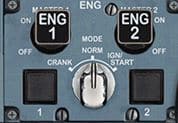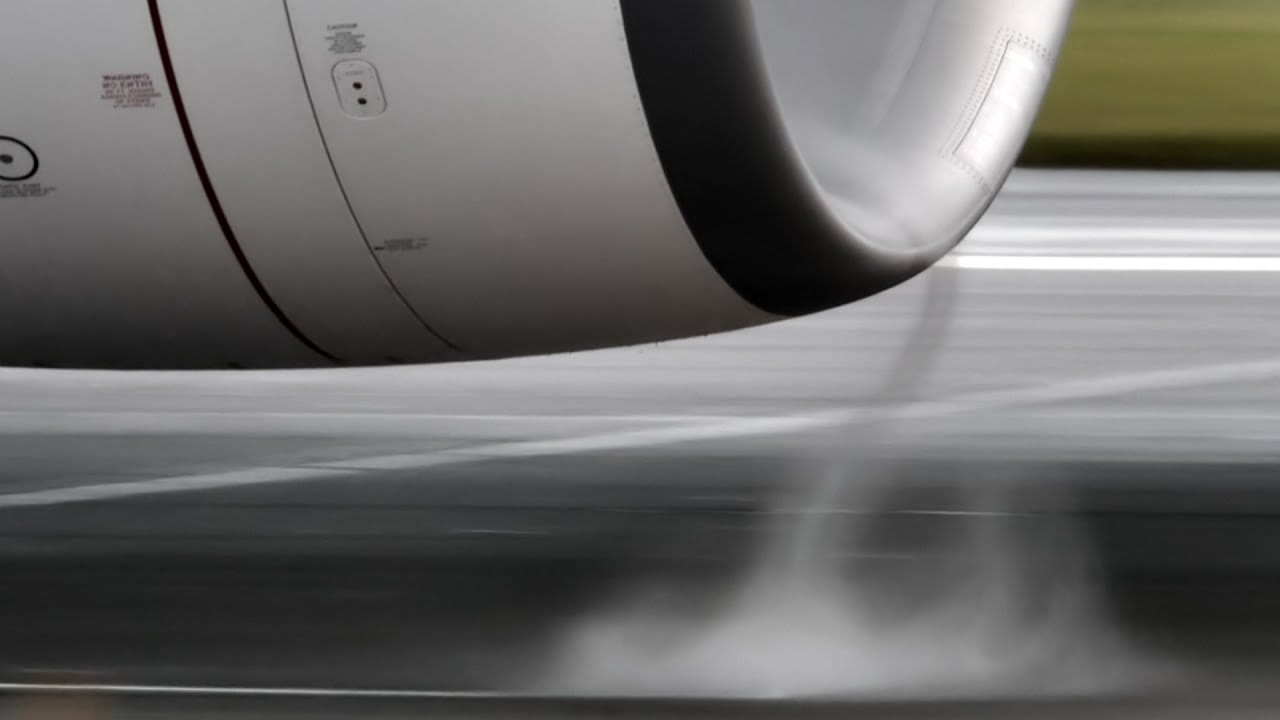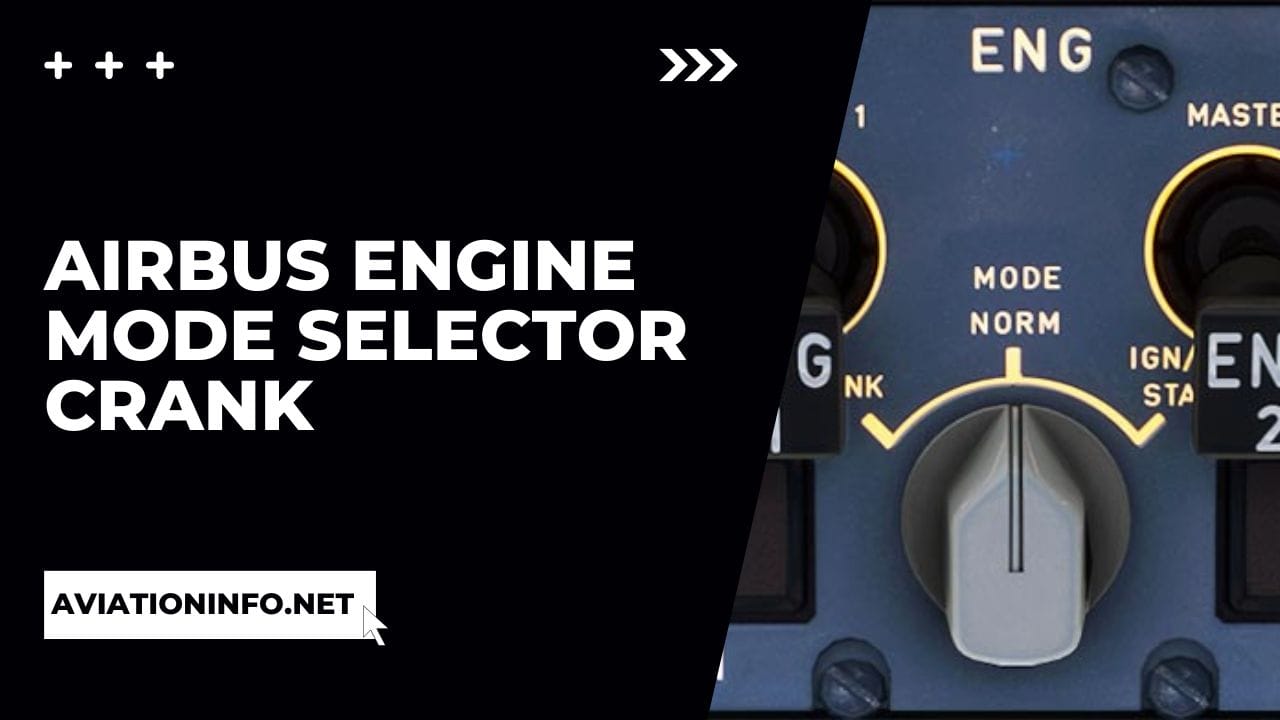On Airbus aircraft, the engine ignition system is controlled via a singular switch that controls the engine start process. This system involves feeding air to the air starter, which starts the rotation of the engines. In this article we’ll discuss about Airbus engine mode selector crank, wet motor over and dry motoring.
Under most operating conditions, the air source fed to the air-starter will be Auxiliary Power Unit (APU) bleed air. If the APU is inoperative (INOP), a ground air-starter unit may be required.
Following stabilization of the initial rotation of the aircraft engines, engine fuel flow switches will be set to the opened (ON) position in order to allow for the ignition of the turbine.
On checklists and SOPs, engine start procedures are detailed using engine parameters (N1, N2, EPR, EGT). This allows the flight crew to assess the engine start process.
During the engine start process, the ignition switch is placed in the IGN/START position. This position is used for starting all engines on the aircraft.
Unlike Boeing aircraft, there are no dedicated ignition switches for each engine.

As can be seen in the above graphic, there are three positions for the engine ignition switch; CRANK, NORM, and IGN START. The IGN/START position concerns the standard engine start procedure detailed above, in which air is fed to the air-starter of the engines.
Dependent on weather conditions, the IGN START position will be maintained throughout the takeoff and initial climb phases of flight following the engine start.
IGN START may also be selected during the approach phase of flight.
If rain or turbulence is expected upon departure or arrival, the IGN START position will be selected. This provides a continuous ignition to the engines.
If such conditions don’t exist, the engine ignition mode selector will be positioned back to the center (NORM).
What is Crank Mode?
As can be seen in the above image, there is a CRANK position on the ignition panel. The CRANK setting is used predominantly by maintenance personnel for performing various engine tests and for troubleshooting purposes.
When CRANK mode is selected, fuel can not be introduced to the engines. The engine ignitors are deactivated and the fuel control unit is in the shutoff position.
The purpose of CRANK mode is to remove potential leftover engine vapors by airing/ventilating the engine.
Also Read: Airbus Flaps/THS Setting
Wet Motor Over
Also known as wet cranking, wet motoring is a process typically applied when an airframe and/or powerplants require re-entry to service maintenance. This form of maintenance is generally required after a significant period of storage.
The primary reason for this procedure is to avoid a hot start of the engines while also factoring into consideration the accumulation of various fluids applied to the engine during preservation or storage.
This procedure is also used when installing a new engine onto an aircraft, in which the powerplant has to be “familiarized” with the airframe.
This practice is also applied in maintenance scenarios in which troubleshooting is required. A wet motor run or wet cranking the engine could determine potential leaks or issues involving the Fuel Management Unit (FMU).

During a wet motor run, the engine is rotated as normal by the air starter unit while engine ignitors are deactivated. This deactivation can be verified or performed by ensuring the relevant Circuit Breakers (CBs) are pulled out.
The fuel cutoff switch for the engine will be selected to the ON position during the wet motor run, allowing for the ventilation of accumulated fluids that would have been applied during the storage/preservation of the engine.
This run can also be used to verify the proper function of the Fuel Control Unit (FCU) or the Fuel Management Unit (FMU).
Following the cycling of the engine via a wet motoring process, this will usually be followed up by dry motoring.
This is in order to avoid a hot start of the engine, in which the thermal engine parameters exceed the standards specified by the manufacturer.
What is Dry Motoring?
Dry motoring also known as dry cranking, involves rotating the engine on the air starter without introducing fuel.
This cycle is performed after an engine has been in storage or if there has been a failed engine start.
A dry crank allows for any accumulated leftover, unburnt fuel to be exhausted and for the engine hot sections to be cooled.
If there is potential for a hot start, a dry crank of the engine will remove this unburnt fuel via the rotation of the engine from the air starter.

After visiting more than 60 countries, I have probably been on every type of plane there is and visited countless airports. I did my very first international solo trip to South Africa at the age of only 16 and haven’t really stopped traveling since.
Despite the adventurous travel itch, I do have a nerdy side as well – which is satisfied by writing about all things aviation “too boring” for my regular travel blog.
